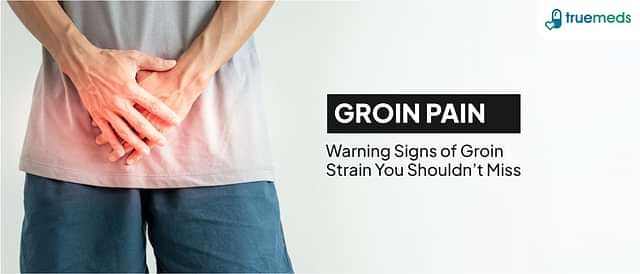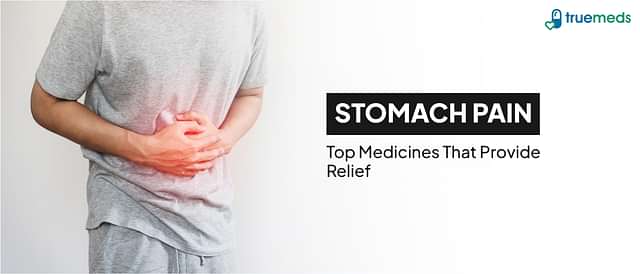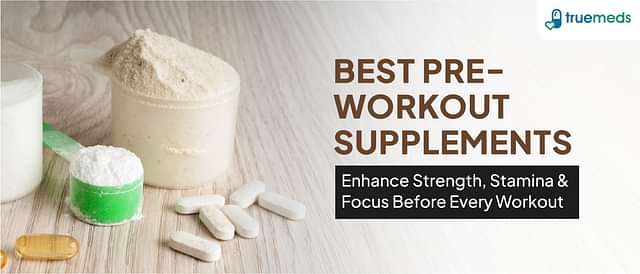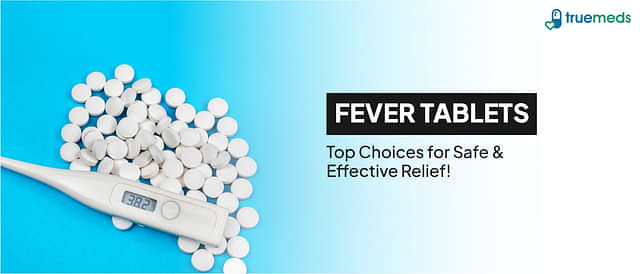What are the Five Warning Signs of BPH?
Last updated on : 21 Apr, 2025
Read time : 9 min
What happens in BPH?
In BPH (Benign prostatic hyperplasia), benign means non-cancerous, and hyperplasia is abnormal cell growth.
The growth phase of the prostate is divided into two phases. The first phase is puberty, where it usually doubles in size. The second phase is after the age of twenty-five; from this age, it keeps growing continuously. When the size exceeds the standard size, the overgrown prostate puts pressure on the urethra, the bladder walls thicken, and the bladder loses the ability to work in a normal/routine manner. The narrowing of the urethra, urinary retention and inability to urinate are the BPH symptoms.
BPH Symptoms
The five warning signs of BPH which manifest as BPH symptoms include
1. Having a frequent and urgent need to urinate
This condition is characteristic of an overactive bladder (OAB). The bladder squeezes the urine at the wrong time. The incorrect timing of urination is also called overactive bladder. A few BPH symptoms which best describe the overactive bladder are:
- Frequent urination ( when a person suffering from overactive bladder urinates more than eight times during the day and two or more times during the night).
- Sudden and strong urges need to urinate.
- Leakage of urine after a strong urge to pass urine.
The factors which influence the OAB, which also influence the frequent and urgent need to urinate, are injury or irritation of the bladder and infection. BPH symptoms which lead to frequent passing of urine, are abdominal trauma, nerve damage, medications, and fluids.
2. The trouble with urine flow
The trouble for urine to flow is typically characterised by the below symptoms.
- Trouble starting the urination
- Urine stream, which is slow or starts and stops involuntarily
- Passing of urine unknowingly, even after passing the urine completely
- Urinary incontinence
- Incomplete emptying of urinary bladder trouble to start the urine is due to
One of the noticeable BPH symptom of trouble with urine flow is urinary incontinence. Urinary incontinence is loss of control of the urinary bladder, where control of urination is out of control. It is a condition which can be improved by treatment. Lower urinary tract symptoms (LUTS) are collective symptoms characteristic of BPH. The triggers for LUTS are an obstruction, abnormality, irritation and infection in the urethra bladder, neck, or urinary sphincter. Most of the symptoms have already been discussed here.
3. Pain after ejaculation or urination
Painful ejaculation and painful urination go hand in hand. Painful ejaculation can last a few minutes to hours, usually not a sign of any serious problem. Many tissues & nerves are involved during ejaculation & urination; anything like conditions, injuries or procedures that affects this area will cause painful ejaculation & urination. Another reason for painful ejaculation is psychological and emotional factors. The function of the prostate gland is to add fluid to the sperm to form semen during ejaculation, which leaves the body through the urethra.
4. Urine with unusual colour and smell
The dark colour of urine and unusual smell due to urinary retention is another classic BPH symptom. The urine with unusual colour and smell is seen in BPH. The reason is an infection of urine. Bacteria can contaminate the urine as it passes from the bladder into the urethra, causing a foul sulphur-like smell to the urine.
5. Needing to pass urine often
It is the prime BPH Symptom. This may be for every one to two hours and occurs majorly during the night.
BPH Causes
The actual cause of BPH is not yet known. BPH is seen in ageing men. It may be due to a change in hormone levels with increasing age.
Enlarged prostate
Enlarged prostate is a condition in which the prostate gland is enlarged more than the standard size. The prostate surrounds the urethra, through which urine goes out. Enlarged prostate is common in all aged men. It is also called BPH.
Prostate enlargement treatment
The treatment for enlarged prostate varies from individual to individual and depends on presenting symptoms. The treatment includes
- lifestyle changes
- Medication changes
- minimal invasive procedures
- Surgery.
A urologist is needed for regular check-ups and treatment if the symptoms are moderate to severe. Unless the symptoms disturb and affect the quality of life, treatment need not be initiated. A mildly enlarged prostate does not need any treatment.
1. Change in Lifestyle
Lifestyle is the option for improving the mild and less severe enlarged prostate symptoms. The lifestyle changes include
- Reduced fluid intake when going out of home and before going to bed.
- Reduced caffeine and alcohol intake
- Avoid or monitor the situation if consuming medications like decongestants, antihistamines, antidepressants and diuretics.
- Train the urinary bladder to hold more urine
- Exercises for pelvic muscles
- Prevention of constipation, if possible, or treating constipation
2. BPH Medicines
The medications show action by either reducing the prostate gland size or stopping the growth of the prostate gland, or reducing the symptoms associated with BPH.
- Alpha-blockers
- Phosphodiesterase 5- inhibitors
- Combination medicines
- 5 -alpha-reductase inhibitors
Alpha-blockers show action by relaxing the smooth muscle of the prostate and bladder neck, improving urine flow, and reducing the blockage of the bladder.
- Terazosin
- Tamsulosin
- Doxazosin
- Alfuzosin
- Silodosin
a) Phosphodiesterase 5- inhibitors
These drugs are mainly for erectile dysfunction. They work by the relaxation of lower urinary tract muscles. Tadalafil belongs to this class of drugs. The role of phosphodiesterase 5-inhibitor drugs in BPH is still under research.
b) Five alpha-reductase inhibitors
These drugs show action by blocking the production of DHT. DHT is thought to have a role in prostate growth.
- Finasteride
- Dutasteride
c) Combination medicines
Several studies, such as Medical therapy of prostatic symptoms( MTOPS), have shown that combination therapies work better than individual drugs. Some of the successful combinations of drugs are
- Finasteride & doxazosin
- Dutasteride and tamsulosin ( This combination of medicine is available in medical stores as a single tablet)
- Alpha-blockers and antimuscarinics
3. Minimally invasive procedures
Minimal-invasive procedures are the choice of treatment when the medicines do not work.
Transurethral needle ablation– The heat generated by the radiofrequency energy is used to destroy the prostate tissue.
Transurethral microwave thermotherapy– The energy from microwaves is used to destroy the prostate tissue.
High-intensity focused sound– A special ultrasound probe is inserted into the rectum near the prostate. Ultrasound waves from the probe heat and destroy the tissue.
Transurethral electrovaporization– A tube-like resectoscope reaches the prostate through the urethra. An electrode attached to the resectoscope has an electric current that vaporises transurethral electrovaporization.
Water-induced thermotherapy– In this procedure, heated water is used to destroy prostate tissue.
Prostatic stent insertion– This procedure involves the insertion of a small device called a prostatic stent through the urethra to the area narrowed by an enlarged prostate. A stent procedure is indicated only when other procedures are not tolerable.
4. Surgery
Surgery is done only when medications do not work, complications arise, and minimally invasive procedures fail to cure BPH. Surgery is done to remove the entire prostate or make cuts in the urethra to widen the urethra.
The type of surgery indicated for BPH are
- Transurethral resection of the prostate (TURP)
- Laser surgery
- Open prostatectomy
- Transurethral incision of the prostate (TUIP)
a) Transurethral incision of the prostate (TUIP)
Transurethral resection of the prostate (TURP): It is the gold standard for treating urethra blockage, which develops due to BPH. A resectoscope through the urethra reaches the prostate and cuts into pieces with a wire loop. Special fluid carries the cut pieces into the bladder, then is flushed outside the body completely.
b) Laser surgery
A high-energy laser is used to destroy prostate tissue.
c) Open prostatectomy
An incision or cut is made on the skin to reach the prostate, and a part or complete prostate is used to remove the prostate.
d) Transurethral incision of the prostate (TUIP)
This procedure is used to widen the urethra. TUIP gives the same relief as TURP but with less risk of side effects.
Conclusion
BPH is a non-cancerous extra growth. It is a condition when the prostate and surrounding tissue expand. It affects the bladder and urethra, thereby leading to problems with urination. It is not a fatal disease. The treatment only aims to alleviate the symptoms but not cure them completely. Consult a doctor if symptoms are severe. Avail teleconsultation from our expert doctors on our online pharmacy when you order medicines, or you can also download our Truemeds app to do the same. Get branded as well as generic medicines by uploading your prescription on Truemeds. When ordering medicines online, you may save more money by selecting alternative or generic medicine advised by Truemed’s expert doctors. And also, save up to 72% on your purchase and get free home delivery pan India.
Frequently asked questions
The exact cause of prostatic hyperplasia is not known. The probable reason is hormonal changes during the ageing process.
BPH cannot be cured but can alleviate the symptoms of the disease.
An enlarged prostate can’t go back to normal completely.
Disclaimer – Truemeds’ sole intention is to ensure that customers have access to information that is accurate & trustworthy. However, the information here should not be used directly, and it cannot act as a substitute for the advice of a doctor. The information provided is only to stay informed. The information on side effects, drug interactions, warnings, and alerts is limited. Please consult your doctor for the right advice on diseases & medication information.
References
Disclaimer
Our healthcare experts have carefully reviewed and compiled the information presented here to ensure accuracy and trustworthiness. It is important to note that this information serves as a general overview of the topic and is for informational purposes only. It is not intended to diagnose, prevent, or cure any health problem. This page does not establish a doctor-patient relationship, nor does it replace the advice or consultation of a registered medical practitioner. We recommend seeking guidance from your registered medical practitioner for any questions or concerns regarding your medical condition.
Popular Articles
Recent Articles
Top-Selling Medicines:
...View more
Top-Selling OTC:
...View more
Company
About UsHealth ArticleHealth StoriesDiseases & Health ConditionsAyurvedaAll MedicinesAll BrandsNeed HelpFAQSubscribe
Registered Office Address
Grievance Officer
Download Truemeds

Contact Us
Our customer representative team is available 7 days a week from 9 am - 9 pm.
v3.7.31
2025 - Truemeds | All rights reserved. Our content is for informational purposes only. See additional information.
Our Payment Partners









































